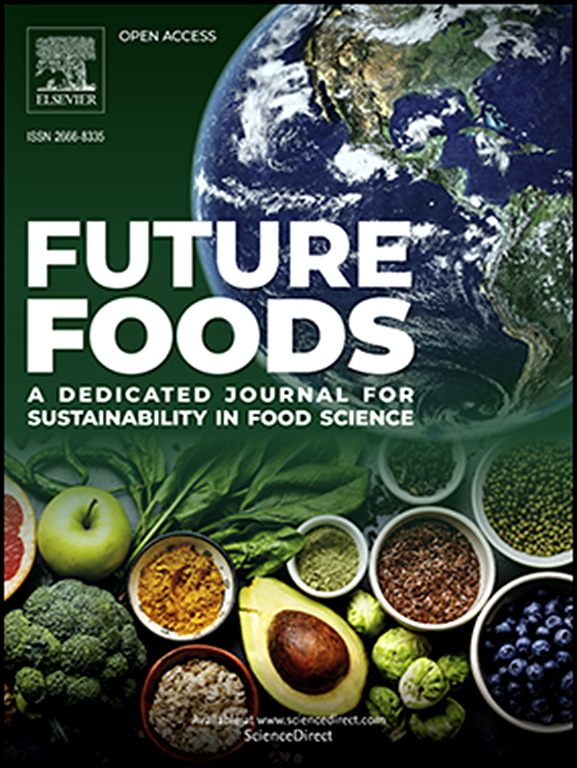普通消费者和非麸质消费者感知的无麸质面包的关键质量维度:苹果渣和亚麻籽的案例研究
IF 8.2
Q1 FOOD SCIENCE & TECHNOLOGY
引用次数: 0
摘要
本研究旨在评估一种无麸质面包的感官知觉,该面包由可持续和当地采购的成分配制:苹果渣和亚麻籽。对无谷蛋白和谷蛋白消费者进行感官评价,分析基于消费模式的感知差异,并确定影响可接受性的关键质量属性。结果表明,含有6%苹果渣和12%亚麻籽的配方是两个消费者群体最能接受的产品。然而,苹果渣含量越高(10%),得分越低,两个消费者群体在总体接受度上没有显著差异。然而,无麸质消费者倾向于提供更详细的感官描述,特别是质地属性,可能是因为他们需要评估新配方的产品在其特性上的巨大变化。“脆”、“质地轻”和“像工匠一样的外观”等被认为是积极的属性,而“橡胶”则成为影响可接受性的主要负面因素。基于这些发现,提出了一种决策树作为评估无麸质面包、平衡缺陷和积极感官特性的工具。这种方法可以指导制造商开发无麸质面包,以满足不同消费模式人群的期望。本文章由计算机程序翻译,如有差异,请以英文原文为准。

Key quality dimensions for gluten-free bread perceived by general and non-gluten consumers: A case study with apple pomace and flaxseed
This study aimed to evaluate the sensory perception of a gluten-free bread formulated with sustainable and locally sourced ingredients: apple pomace and flaxseed. Sensory evaluation was performed with gluten-free and gluten consumers to analyze the differences in perception based on consumption patterns and to identify the key quality attributes influencing acceptability. Results showed that the formulations containing up to 6 % apple pomace and 12 % flaxseed resulted in the most acceptable products for both consumers group. However, higher levels of apple pomace (10 %) led to lower scores, and no significant differences in overall acceptability were found between both consumers groups. Nevertheless, gluten-free consumers tended to provide more detailed sensory descriptions, particularly for texture attributes, likely due to their need to evaluate newly formulated products with a great variability in their characteristics. “Crispy”, “Light texture” and “artisan-like appearance”, among others, were identified as positive attributes, while “rubbery” emerged as the main negative factor affecting acceptability. Based on these findings, a decision tree was proposed as a tool to evaluate gluten-free bread, balancing defects and positive sensory characteristics. This approach could guide manufacturers in developing gluten-free breads that meet the expectations of people with different consumption patterns.
求助全文
通过发布文献求助,成功后即可免费获取论文全文。
去求助
来源期刊

Future Foods
Agricultural and Biological Sciences-Food Science
CiteScore
8.60
自引率
0.00%
发文量
97
审稿时长
15 weeks
期刊介绍:
Future Foods is a specialized journal that is dedicated to tackling the challenges posed by climate change and the need for sustainability in the realm of food production. The journal recognizes the imperative to transform current food manufacturing and consumption practices to meet the dietary needs of a burgeoning global population while simultaneously curbing environmental degradation.
The mission of Future Foods is to disseminate research that aligns with the goal of fostering the development of innovative technologies and alternative food sources to establish more sustainable food systems. The journal is committed to publishing high-quality, peer-reviewed articles that contribute to the advancement of sustainable food practices.
Abstracting and indexing:
Scopus
Directory of Open Access Journals (DOAJ)
Emerging Sources Citation Index (ESCI)
SCImago Journal Rank (SJR)
SNIP
 求助内容:
求助内容: 应助结果提醒方式:
应助结果提醒方式:


